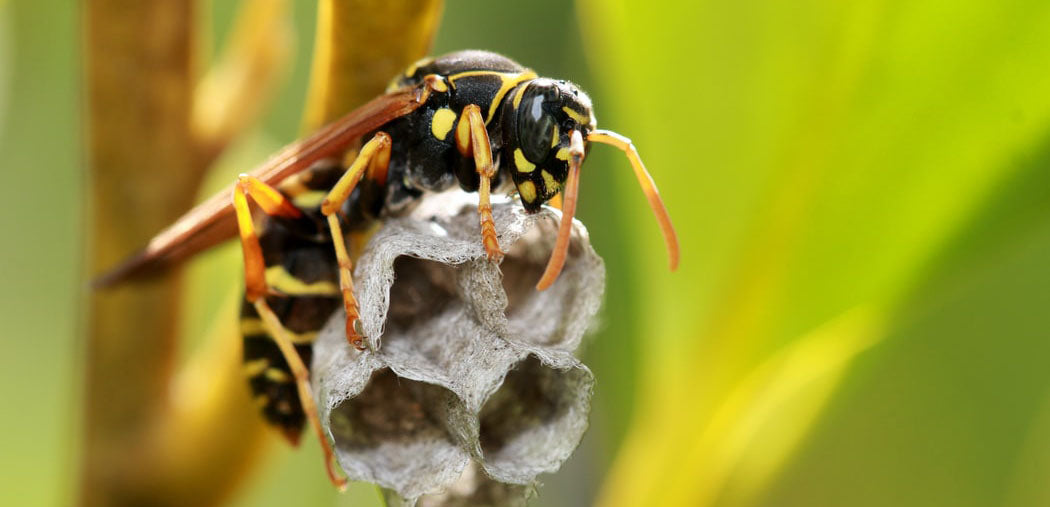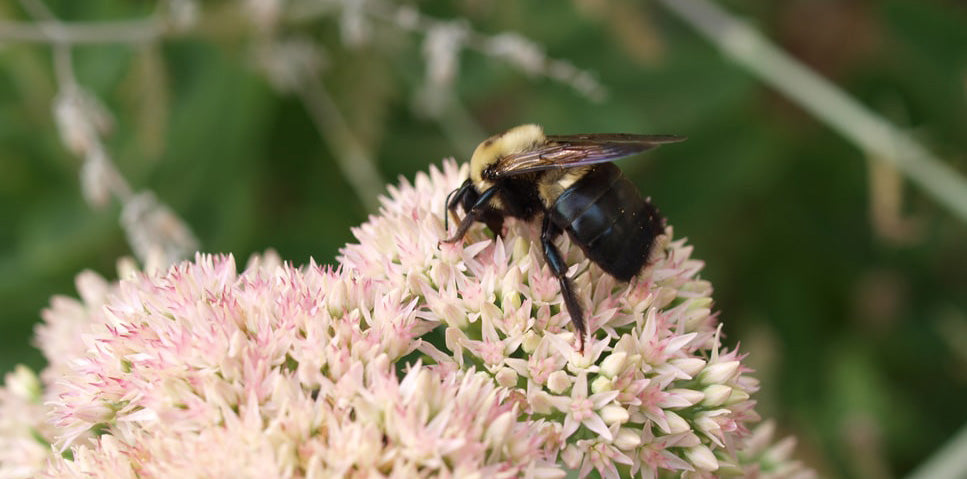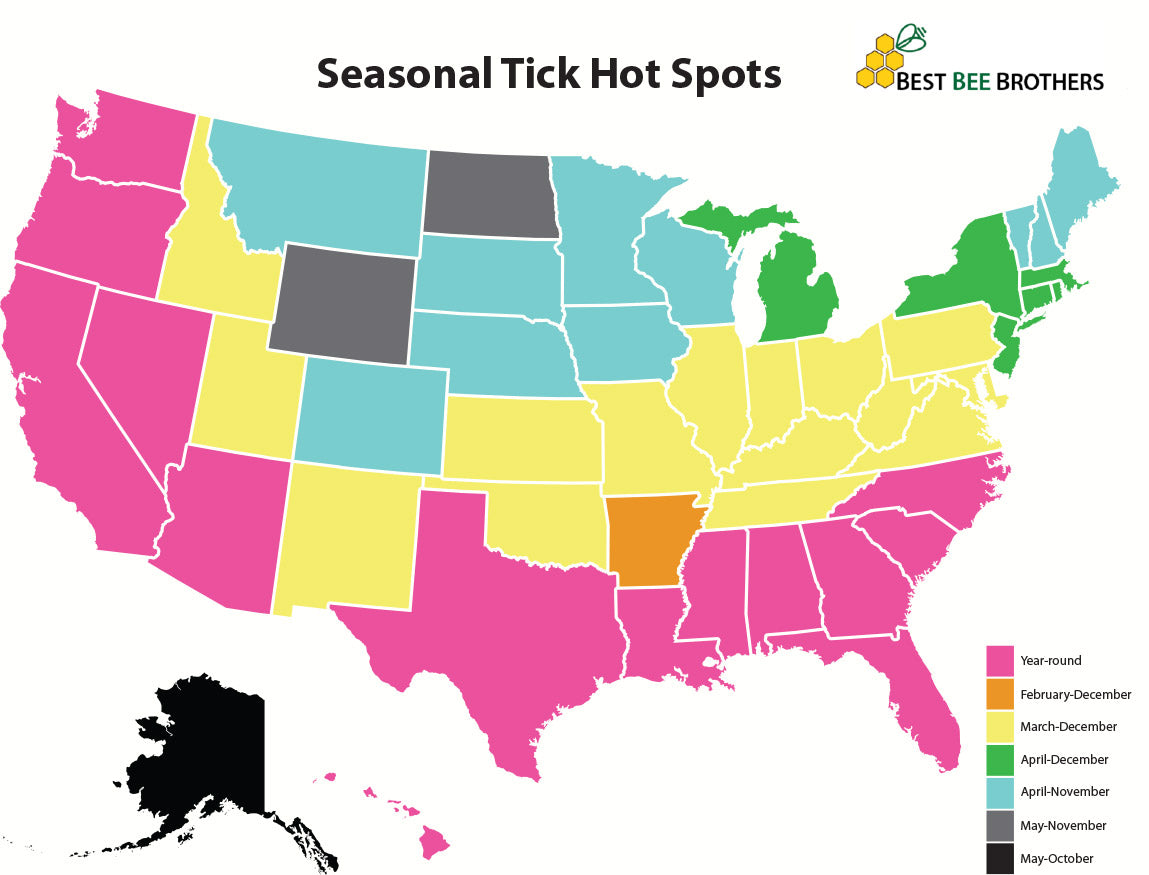One question we get all the time is how to tell the difference between wasps and hornets. All hornets are wasps, but not all wasps are hornets. In that sense, the term “wasp” refers to a broader category of the Vespidae scientific family. In the US the most common species of social wasps you’re likely to encounter are yellow jackets, hornets and paper wasps.
Note: Social wasps are different from solitary wasps (great black wasp). We don’t discuss solitary wasps here.
At a glance, paper wasps, hornets and yellow jackets may look and act very similarly. They can all be extremely aggressive and territorial creatures. Their stings can inflict a lot of pain, and they can be incredibly difficult to remove without harmful pesticides. Read on to learn about how to identify them and get tips on how to safely get rid of these pests.
All wasps have a narrow “waist,” or petiole, between the thorax and the abdomen 1. There are many species of wasps worldwide, which can exhibit a variety of bright colors. In the US, wasps have black, white, orange or yellow markings. They can range in size from half an inch to up to two inches long.

How to Tell a Hornet and Yellow Jacket Apart
How can you tell a hornet and a yellow jacket apart? To quickly distinguish between hornets and yellow jackets, look at their relative size. A hornet will be noticeably larger than a yellow jacket. The only true hornet in the US is the European bald-faced hornet, which has a rounder appearance and can grow to be up to 2 inches long.2
Design Note: Can you have these two images next to or near each other so a reader can compare the differences easily?

Photo Credit: britannica.com

Photo Credit: thecanadianencyclopedia.ca
Hornet Nest vs. Yellow Jacket Nest
Perhaps the easiest way to distinguish hornets from yellow jackets is by the location of their nest. Hornets (and paper wasps – more about them below) prefer to nest in extremely large, aboveground colonies. You can typically find their nests hanging from sturdy tree branches and from eaves and decks. These nests have a high volume of activity, so beware of getting too close.

Photo Credit: thecanadianencyclopedia.ca
In contrast, the nests of yellow jackets are most often found underground. Typically the entrance to this nest will be at least partially hidden, so you will likely see the yellow jackets themselves before you locate their nest. Some yellow jackets will construct nests in wall voids or exposed under eaves of houses.

It’s important to note here, however, that both yellow jackets and hornets are capable of stinging multiple times. Since both species are renowned for their aggressive and territorial behavior, we never recommend getting close to a hornet or yellow jacket nest if it can be helped. To learn even more about yellow jacket and hornet behavior, check out our blog post: The Life Cycle of a Wasp.
Paper Wasps
Earlier we mentioned the three types of wasps most commonly found in the US: hornets, yellow jackets and paper wasps. While we touched on the former two, paper wasps are still an important and formidable opponent if you disturb their nest.

Like hornets, paper wasps prefer to build their colonies above ground, usually from a hanging structure, such as the roof or eaves of your home. Shape is one easily identifiable characteristic that differentiates a hornet’s nest from a paper wasp’s nest. Paper wasps’ nests tend to resemble an upside-down umbrella. Unlike bees, however, they do not have fuzzy bodies. Paper wasps dangle their long legs when they fly while yellow jackets tuck their legs.
Aside from the less commonly found European bald-faced hornet, paper wasps are the the largest social wasp species in the US, measuring ⅝ to ¾ inch in length 3. Like hornets and yellow jackets, paper wasps are capable of stinging more than once, though their colonies and nests tend to house fewer numbers.

Photo Credit: http://agrilife.org/
A paper wasp and a yellow jacket can be difficult to tell apart visually, particularly if you don’t have the two side by side for reference. Generally speaking, however, the paper wasp has a thinner and more elongated body than the somewhat rounded shape of the yellow jacket.
If you notice a large amount of wasps in your home or yard, check out our wasp traps. These traps will work with hornets, yellow jackets and paper wasps, and can be a safe and effective way to get rid of these insects.
- “Wasps,” National Geographic, accessed March 13, 2021, .
- “European Hornet,” Penn State Extension, College of Agricultural Sciences, accessed March 6, 2021, .
- Eric P. Benson and Patricia A. Zungoli, “Paper Wasps,”, Cooperative Extension, College of Agriculture, Forestry and Life Sciences, Clemson University, accessed March 16, 2021, .









Leave a comment
All comments are moderated before being published.
This site is protected by hCaptcha and the hCaptcha Privacy Policy and Terms of Service apply.